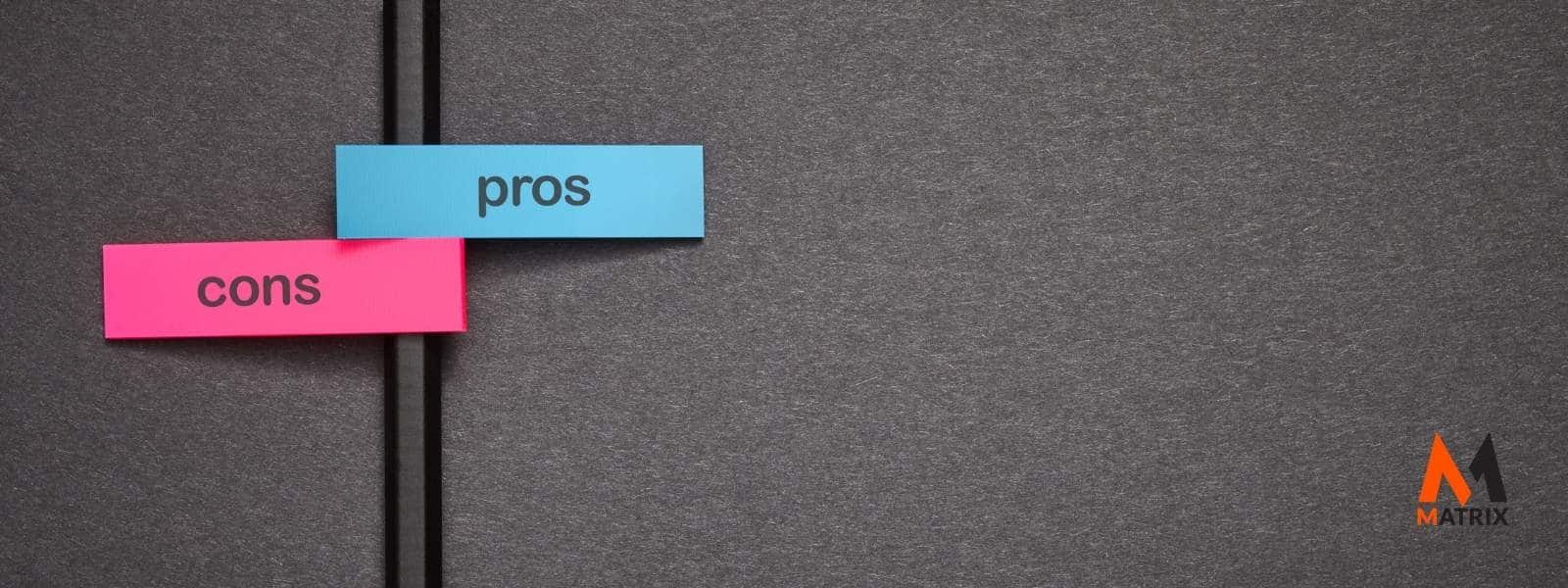Interruption Marketing vs. Permission Marketing: Which Mix Works
Interruption marketing usually requires a large budget and a time-consuming process to ensure your message gets through successfully interruption marketing.
On the other hand, relies on earning the trust and respect of the target audience so that they will be more likely to listen to your message. Intrusion marketing requires a huge budget; interruption marketing can be very expensive.
Interruption marketing can also require a lot of time. Interruption advertising is like interruption advertising; it must use multiple media channels, such as TV, radio, and social media.
Interruption advertising has been the go-to business strategy for decades. Intrusion marketing has worked in the past.
Interruption marketing works well for certain types of products or services. Intervention advertising relies on blasting potential customers with ads or messages to get their attention.
The Skill Gap: Why 85% of Marketers Are Not Ready
The Skill Gap: Why 85% of Marketers Are Not Ready highlights the urgent need for upskilling in a rapidly evolving digital landscape. Advanced technologies like AI, data analytics, and automation are outpacing traditional marketing expertise, leaving most professionals unprepared to adapt and compete effectively.
Do you remember the call at dinnertime?
Interruption marketing is a type of advertising where a company will pay to have its advertisement aired in a commercial unrelated to the advertised product or service. It often results in an unrelated interruption, such as an interruption from a TV show, radio show, or sports event.
Interruption marketing is the best way to advertise your product. Interruption marketing has been around for decades, and all businesses have used it to reach their target audience.
Interruption marketing is effective because people are much more likely to pay attention when watching TV or listening to the radio than if they just paid for a billboard.
- Interruption marketing happens when an advertisement comes on while you’re watching TV, listening to music, etc., even though that interruption may be. Unrelated to the program, interruption is shown.
- Interruption advertising can be expensive, but it works because people tend not to pay attention unless something interesting happens.
This article will help explain how permission marketing differs from intrusion marketing and why this new type of marketing is a better way to reach customers.
Permission marketing is a different type of interruption marketing that focuses on getting permission from those advertised instead. Content Marketing Financial Firms
Interruption Marketing Pros

Interruption marketing is a technique where businesses interrupt their target audience with advertising to get their attention. Interruption marketing is known for its ability to generate quick results, and it can be highly effective if done correctly.
However, there are also some major drawbacks to intrusion marketing that businesses must be aware of.
Interruption Marketing Cons
The biggest downside to interruption marketing is that it can alienate and frustrate customers. If a business interrupts its target audience too often, it may start to feel irritated or even overwhelmed.
This can lead to customers avoiding or ignoring the ads, harming the business’s bottom line.
Additionally, intrusion marketing can make it difficult for businesses to build trust and respect with their target audience. Interruption marketing can be perceived as cheap or desperate, which is not the reputation that most businesses are trying to achieve.
Another downside of interruption marketing marketing is that it’s more likely than permission marketing to annoy potential customers.
Interruption marketing often feels like an invasion of privacy, so many people will hit the close button before they’ve ever had the chance to learn what your brand offers or why you might be worth checking out more thoroughly.
Intrusion marketing will work best for businesses with widespread name recognition and brand awareness. Interruption marketing is more of an option for large companies trying to get the attention of small target audiences.
What is Permission Marketing?

Permission marketing means companies will give out free samples of their products for people to try and make decisions based on their experience rather than the information they’ve been given. In-app purchases are a good example of permission marketing.
Permission marketing and inbound marketing go hand in hand.
Permission marketing is done by building a relationship between the company and the consumer.
There are many other factors along with this, but these are some of the main ones you should include in your article. It doesn’t have to be an interruption from the interruption piece as long as it discusses how interruption marketing and permission marketing differ.
How Permission Marketing is used with artificial intelligent systems:
Permission Marketing, a concept introduced by marketing guru Seth Godin, emphasizes building customer relationships by obtaining their consent to receive marketing messages. This approach contrasts with traditional marketing tactics that rely on intrusive and often unwelcome interruptions. Artificial intelligence (AI) has emerged as a powerful tool for enhancing Permission Marketing strategies by enabling personalized, relevant, and timely customer interactions.

Leveraging AI for Permission Marketing Success
- Personalized Customer Segmentation: AI algorithms can analyze vast amounts of customer data to identify patterns and segment customers based on their demographics, behaviors, and preferences. This segmentation allows marketers to tailor their messages and offers to specific customer groups, increasing the likelihood of engagement and conversion.
- Dynamic Content Recommendations: AI models can analyze customer interactions and preferences to recommend relevant content, such as product suggestions, articles, or videos. These personalized recommendations enhance the customer experience and encourage further engagement with the brand.
- Real-time Customer Engagement: AI-powered chatbots and virtual assistants can provide real-time customer support, answer questions, resolve issues, and offer assistance throughout the customer journey. This personalized and immediate interaction fosters trust and loyalty.
- Predictive Analytics for Targeted Marketing: AI can analyze historical data and customer behavior to predict future actions and preferences. This predictive capability enables marketers to send targeted marketing messages at the right time, maximizing the impact of their campaigns.
- Automated Consent Management: AI can streamline the obtaining and managing of customer consent for marketing communications. This ensures that marketers adhere to data privacy regulations and maintain customer trust.
Benefits of Combining AI and Permission Marketing
- Enhanced Customer Experience: AI-driven Permission Marketing creates personalized and relevant interactions, fostering a positive customer experience that builds trust and loyalty.
- Improved Marketing ROI: Personalized marketing campaigns tailored to specific customer segments result in higher engagement, conversion rates, and overall return on investment (ROI).
- Strengthened Customer Relationships: Personalized interactions and real-time engagement nurture long-lasting customer relationships, increasing customer lifetime value.
- Data-Driven Insights and Decision Making: AI-powered analytics provide valuable insights into customer behavior and preferences, enabling informed marketing decisions and strategies.
- Enhanced Compliance and Regulatory Oversight: AI can automate consent management and ensure compliance with data privacy regulations, protecting customer data and minimizing legal risks.
In conclusion, Permission Marketing and AI are powerful, enabling marketers to build meaningful customer relationships, deliver personalized experiences, and achieve superior marketing outcomes. As AI technology evolves, its integration with Permission Marketing will refine marketing strategies and enhance the customer journey.
Interruption Marketing vs. Permission Marketing

Disruption marketing will often feel like an invasion of privacy. At the same time, permission may seem more inviting because businesses are taking steps to earn their customers’ trust and respect before interrupting them with sales pitches or ads.
Interruptions can be highly effective if done correctly, but businesses must understand the drawbacks to know when interruption might not be worth the risk.
Permission, conversely, is less likely to annoy or alienate customers, and it can be more effective when done correctly.
Intrusion marketing is not the best strategy for businesses just starting. In contrast, permission marketing could help these businesses establish themselves as experts in their respective fields by providing helpful tips instead of trying to sell something immediately.
One final difference between intrusion marketing and permission marketing is that interruption marketing requires a lot of work upfront, while permission doesn’t require any interruption.
Interruption marketers must find creative ways to interrupt people before they even start looking for this information themselves.
Permission marketers know where to find their target audience, so there’s no interruption needed on their end either – they can focus more on engaging with existing clients through various forms of content and social media engagement.
Interruption marketing might require a lot of money to get started. In contrast, permission marketing is often more affordable. It can allow businesses to make more long-term investments with their time and energy instead of high up-front costs for interruption methods such as print ads or billboards.
Permission Marketing Pros

When it comes to marketing, there are two main strategies that businesses can use:
- interruption marketing
- permission marketing.
Permission marketing, on the other hand, relies on earning the trust and respect of the target audience so that they will be more likely to listen to your message.
Here are 5 reasons why permission marketing is a better strategy than disruption marketing:
- Less effective than permission marketing.
- It can be annoying and overwhelming for potential customers.
- It can damage relationships with customers.
- It can be expensive and time-consuming.
- Often, it results in ineffective ads/messages that can be forgettable rather than meaningful.
Permission Marketing Cons
Intrusion marketing has been the go-to strategy for decades, and it relies on blasting potential customers with ads or messages to get their attention.
Disruption marketing often results in ineffective ads/messages that can be forgettable rather than meaningful.
Intrusion marketing is less effective than permission marketing. Intrusion marketing can be annoying and overwhelming for potential customers.
How to Start an Inbound Marketing Strategy
In the digital milieu, a well-crafted inbound marketing strategy is a lighthouse amidst the turbulent information overload. It beckons your ideal customers to the welcoming shores of your brand, guiding them gently through their buyer’s journey. Here’s how to chart the course.
How to start an inbound marketing strategy:
Step 1: Define your goals and target audience
Before creating content and promoting your business, you must clearly define your goals and target audience. What do you want to achieve with your inbound marketing efforts? Are you looking to generate leads, increase sales, or improve brand awareness? Once you know your goals, you can identify your target audience – the people you want to reach with your marketing messages.
Step 2: Create buyer personas
Buyer personas are semi-fictional representations of your ideal customers. They help you understand your customers’ needs, wants, and pain points so you can create content that is relevant and engaging to them. You can interview existing customers, conduct surveys, and analyze your website traffic data to create buyer personas.
Step 3: Develop a content calendar
A content calendar is a plan for creating and publishing content over time. It helps you stay organized and ensure that you are consistently publishing high-quality content that will attract and engage your target audience. Your content calendar should include the type of content you will create, the target audience for each piece, and the deadline for publishing each piece.
Step 4: Create valuable and informative content
The foundation of inbound marketing is creating valuable and informative content that your target audience will want to read, watch, or listen to. This content can include blog posts, articles, infographics, videos, and podcasts. Your content should be relevant to your target audience’s interests and needs and provide them with something of value, such as new information, insights, or solutions to their problems.
Step 5: Optimize your website for search engines
Search engine optimization (SEO) is optimizing your website to rank higher in search engine results pages (SERPs). This will make it easier for people to find your website when searching for your business information. There are several SEO techniques that you can use, such as keyword research, on-page optimization, and link building.
Step 6: Promote your content on social media
Social media is a powerful tool for promoting your content and reaching your target audience. Share your content on social media platforms like Facebook, Twitter, LinkedIn, and Instagram. You can also use social media to run targeted ads and engage with your audience in conversations.
Step 7: Track your results and measure your progress
It is important to track your inbound marketing results to see what works and what does not. This will help you adjust your strategy and improve your results over time. You can track several metrics, such as website traffic, lead generation, and sales.
Step 8: Use automation tools
Several automation tools can help you with your inbound marketing efforts. These tools can automate tasks such as email marketing, social media scheduling, and analytics reporting. Using automation tools can free up your time to focus on creating high-quality content and promoting your business.
Step 9: Be patient and persistent
Inbound marketing is a long-term strategy that takes time to see results. Don’t get discouraged if you don’t see results overnight. Keep creating great content, promoting your business, and tracking your results. Eventually, you will start to see the results of your hard work.
Inbound marketing is a powerful way to attract, engage, and convert leads into customers. By following these steps, you can develop an effective inbound marketing strategy that will help you grow your business.
Additional tips for starting an inbound marketing strategy
- Set realistic goals. Don’t try to do too much too soon. Start with a few small goals and gradually increase them as you progress.
- Focus on quality over quantity. It’s better to create a few pieces of high-quality content than a lot of mediocre content.
- Be consistent. Publish new content regularly to keep your audience engaged.
- Be patient. It takes time to see results from inbound marketing. Don’t give up!
Introduction to Inbound Marketing
Lead Decay in Search Results
65% of leads generated from organic search lose 90% of their value within 48 hours if not immediately engaged.
In the digital renaissance, inbound marketing emerges as the strategic approach that focuses on attracting customers through content and interactions that are relevant and helpful. It’s a paradigm shift from traditional outbound marketing, which interrupts your audience with content they don’t always want.
The Inbound Methodology
The cornerstone of inbound marketing is the methodology that transforms strangers into promoters. It’s a tripartite philosophy: Attract, Engage, Delight. This framework nurtures a meaningful, lasting relationship with consumers.
The Inbound Methodology from the perspective of a HubSpot marketing consultant:
The Inbound Methodology is a strategic marketing approach focusing on attracting, converting, closing, and delighting customers.
It’s a non-interruptive, pull-based approach that attracts customers to your brand by creating valuable content and experiences that they find relevant and helpful.
The four stages of the Inbound Methodology are:
- Attract: Draw visitors to your website and social media channels by creating high-quality content that addresses their needs and interests. This could include blog posts, articles, infographics, videos, and social media posts.
- Convert: Capture the contact information of visitors interested in your brand by offering valuable resources, such as ebooks, webinars, or free trials. This can be done through landing pages and calls-to-action (CTAs).
- Close: Nurture leads into customers by building relationships and providing them with personalized information that helps them move through their buying journey. This can be done through email marketing, marketing automation, and one-on-one sales conversations.
- Delight: Exceed customer expectations by providing ongoing support, education, and opportunities for engagement. This could include personalized product recommendations, customer appreciation events, and exclusive content.
Benefits of using The Inbound Methodology:
- Generates qualified leads: The Inbound Methodology attracts genuinely interested visitors in your products or services, leading to a higher quality of leads.
- Builds trust and credibility: By providing valuable content and experiences, you establish your brand as a trusted resource and thought leader in your industry.
- Improves customer acquisition costs: The Inbound Methodology is a cost-effective way to attract and convert customers compared to traditional marketing methods.
- Enhances customer lifetime value: By delighting customers, you encourage them to become loyal advocates for your brand, increasing their lifetime value.
How HubSpot tools support The Inbound Methodology:
HubSpot offers a suite of marketing, sales, and service tools that support each stage of The Inbound Methodology:
- Attract: HubSpot’s marketing automation tools help you create, publish, and promote high-quality content across multiple channels.
- Convert: HubSpot’s landing pages and forms capture visitor contact information and nurture leads through email marketing and automation workflows.
- Close: HubSpot’s CRM and sales tools help you manage leads, track their progress through the sales pipeline, and close more deals.
- Delight: HubSpot’s service tools help you provide excellent customer support, manage customer feedback, and build long-lasting customer relationships.
By leveraging HubSpot’s comprehensive suite of tools, businesses can effectively implement The Inbound Methodology and achieve their marketing goals.
Setting the Stage: Aligning Your Business Goals with Inbound Marketing

Your odyssey begins with crystallizing your business objectives. Inbound marketing thrives on SMART goals: Specific, Measurable, Achievable, Relevant, and Time-bound. These goals provide a scaffold for your strategy.
Customer Personas: The Compass of Inbound Strategy
Crafting detailed buyer personas is akin to charting the stars for navigation. It involves delving into psychographics and demographics to understand your ideal customer clearly. Data analytics serve as the sextant for this process.
Content as the Cornerstone
Content is the currency of inbound marketing. It ranges from blogs to ebooks, encompassing a spectrum of media designed to address the needs and questions of your prospects.
The Head, Heart, and Hand content strategy is a holistic approach to creating content that appeals to all aspects of human decision-making. It suggests that content should be informative, emotionally engaging, and actionable to resonate with a wide audience.
Appealing to the Head
The “Head” aspect focuses on providing valuable and informative content that satisfies the audience’s intellectual curiosity. This includes:
- Research-backed information: Sharing data, statistics, and expert insights to establish credibility and authority.
- Thought leadership: Providing unique perspectives, original ideas, and commentary on industry trends.
- Educational content: Offering tutorials, guides, and practical tips to help the audience learn and improve their skills.
Appealing to the Heart
The “Heart” aspect emphasizes the emotional connection with the audience. This involves:
- Emotional storytelling: Using vivid narratives, relatable characters, and evocative language to evoke emotions and create a lasting impression.
- Empathy and understanding: Demonstrating empathy for the audience’s needs, challenges, and aspirations.
- Community building: Fostering a sense of belonging and connection among the audience.
Appealing to the Hand
The “Hand” aspect focuses on prompting the audience to take action. This includes:
- Clear calls to action: Providing specific and actionable instructions for the audience.
- Enabling tools and resources: Offering practical tools, templates, or checklists to support the desired action.
- Case studies and success stories: Showcasing real-world examples of how people have benefited from taking action.
By combining these three elements – informative, emotionally engaging, and actionable content – businesses can create a content strategy that resonates with a wider audience, drives deeper engagement, and ultimately achieves their marketing goals.
Content Planning: Crafting Your Message
A well-thought-out content strategy is your map. It involves orchestrating your content release through editorial calendars to ensure alignment with your marketing objectives.
70% of agencies need help integrating AI solutions.
70% of agencies need help integrating AI solutions into their tech stack, citing a lack of interoperability as a major barrier. 85% of marketing agencies need more in-house expertise to manage and deploy multi-AI agent systems effectively.
Search Engine Optimization: Getting Found Online
SEO is the wind in your sails. It ensures your content is discoverable by the right people. Keyword research and on-page optimization are your trusty navigational tools.
Actionable steps you can take to get to your first 50,000 visitors per month on your website:
1. Conduct thorough keyword research:
Identify relevant keywords with high search volume and low competition. Use keyword research tools like Google Keyword Planner, Semrush, or Ahrefs to analyze search trends and identify potential keywords to target.
2. Create high-quality, keyword-rich content:
Craft engaging and informative content that addresses the needs and interests of your target audience. Optimize your content for search engines by incorporating relevant keywords naturally throughout your articles, titles, and meta descriptions.
3. Build backlinks to your website:
Backlinks from reputable websites act as votes of confidence, signaling to search engines that your content is valuable and trustworthy. Contact industry influencers, participate in online forums, and guest blog on relevant websites to earn backlinks.
4. Optimize your website for search engines (SEO):
Ensure your website is technically sound and easy for search engines to crawl and index. Use SEO best practices, such as optimizing page titles, meta descriptions, image alt tags, and internal linking structure.
5. Promote your website on social media:
Share your content across social media platforms to increase visibility and drive traffic to your website. Engage with your audience, respond to comments, and participate in relevant conversations to build a loyal following.
Unlock Your Brand’s Full Potential with the Best Social Media Services
Engage. Inspire. Grow.
Are you ready to take your social media presence to the next level? Our comprehensive social media services are designed to help your brand connect with your audience, boost engagement, and drive measurable results. From strategy to execution, we’ve got you covered.
6. Utilize email marketing:
Build an email list and send regular newsletters or promotional emails to keep your audience engaged and informed. Segment your email list to target specific groups with personalized messages.
7. Run targeted ads:
Use paid platforms like Google Ads or social media ads to reach a wider audience and drive targeted traffic to your website.
8. Monitor your website traffic and analytics:
Use analytics tools like Google Analytics to track your website traffic, identify popular content, and understand visitor behavior. Use these insights to refine your content strategy and improve your website’s performance.
Remember, achieving 50,000 visitors per month takes time and consistent effort. Focus on creating high-quality content, building backlinks, and engaging with your audience to establish your website as a valuable resource in your industry.
Leveraging Social Media to Amplify Your Message
Social media platforms are the currents that can propel your content further. Selecting the right platforms and engaging with your audience is crucial for amplifying your inbound efforts.
Creating Compelling Lead Magnets
Lead magnets are the treasures that prospects seek. They offer value in exchange for contact information. Whether an insightful webinar or a comprehensive guide, these must be irresistible to your audience.
The Art of Landing Pages
Your landing page is the island where treasures are found. Each element, from headline to call-to-action, must be optimized for conversion. Continuous A/B testing ensures you find the perfect formula.
Conversion Optimization: The Path to Customer Acquisition
Understanding and optimizing conversion paths is like charting the most efficient route to your destination. It involves analyzing and tweaking every step the customer takes toward making a purchase.
Email Marketing: Nurturing Leads into Customers
Email marketing is the compass that keeps you on course. It involves segmenting your audience and personalizing content to nurture leads down the funnel.
CRM Systems: Managing Relationships at Scale
A CRM system is your ship’s log, keeping track of every interaction with your prospects. It’s essential to scale your inbound marketing efforts and provide a personalized experience.
Analytics and Measurement: The Map to Success
Metrics and analytics are your map and sextant, guiding your strategy and showing you what’s working. They help you understand the ROI of your inbound marketing efforts.
The Power of Storytelling in Inbound Marketing
Storytelling is the soul of your brand’s voyage. It involves weaving narratives that resonate with your audience, making your brand memorable and relatable.
User Experience: The Silent Ambassador of Your Brand
The user experience on your website is the ambiance of your brand’s abode. It should be welcoming and easy to navigate, ensuring a pleasant journey for visitors.
The Role of Video in Inbound Marketing
Video content is the siren song of inbound marketing. It’s compelling, engaging, and can convey complex messages with ease. Tips for creating engaging videos can ensure your content captivates and converts.
Aligning Sales and Marketing: A Symbiotic Relationship
The alignment between sales and marketing is the alliance that ensures smooth sailing. It’s about ensuring both teams work towards the same goals and support each other’s efforts.
Inbound Marketing and Technology: Tools of the Trade
To navigate these waters, you need the right tools. From automation platforms to analytics tools, the technology you choose should support and enhance your inbound efforts.
Building a Team for Inbound Success
Whether you build an in-house team or outsource, your crew must be skilled in inbound marketing. Their expertise will be the driving force behind your strategy.
Continuous Learning and Adaptation
The world of inbound marketing is ever-evolving. Staying informed on the latest trends and continuously adapting your strategy is crucial for staying afloat.
Conclusion: Taking the First Step on Your Inbound Journey
Inbound marketing is a journey, not a sprint. With this guide, you can take the first step towards transforming your marketing strategy and propelling your brand to new heights.
Interruption marketing relies on interrupting people while they’re doing something else. Disruptive marketing hopes people will pay attention to ads/messages out of surprise, curiosity, uncertainty, confusion, or boredom.
Typically, more expensive interruption advertising can cost thousands of dollars. Interrupting advertising can cost millions to generate interruption ads, which can be annoying. Interruptions are often intrusive interruption ads.
Intrusion marketing is often more affordable and can allow businesses to invest more long-term time and energy instead of high up-front costs for interruption methods such as print ads or billboards.
Permission marketing is different. Interruption advertising relies on blasting potential customers with ads or messages to get their attention. Disruption marketing relies on gaining permission from customers before sharing information. SEO for Financial Services – Marketing for Finance Companies
Interruption marketing can be expensive marketing, often resulting in ineffective ads/messages that can be forgettable rather than meaningful interruption advertising is like an army interruption advertising must use multiple media channels, such as TV, radio, and social media. Disruption advertisements are everywhere interruption advertisements.
However, in recent years, there’s been a shift towards permission advertising that can help businesses earn more trust and respect from their target audience. Learn what interruption advertisement is, how it differs from consent promotion, and why we should consider changing to this new way of doing business!
Interruption marketing has been the go-to business strategy for decades. However, in recent years, there’s been a shift towards permission marketing that can help businesses earn more trust and respect from their target audience.
Learn what marketing is, how it differs from permission marketing, and why we should consider switching! SEO for Professional Services Firms
FAQs
What are the best interruption marketing channels?

Interruption marketing interruption advertising is usually more affordable. Interruption commercials are often intrusive interruption ads that can cost thousands of dollars. Interruption ads are often forgettable interruption advertisements are everywhere. Interruption ads are invasive.
How can interruption marketing be more affordable?
There is no limit on how much your company can spend using permission marketing since people will voluntarily come to be the target. Interruption commercial investment for different communication channels is also more affordable than other advertising or communication options.
Do interruption marketing strategies still work?

The interruption marketing strategy still does work, but it has to change to be successful. Interruption advertising is designed to grab people’s attention by interrupting them with loud noises and louder, more shocking visuals. Interruption commercials are the perfect example of interruption marketing.
What is inbound marketing?

Inbound marketing is a marketing methodology that attracts customers by creating valuable content and experiences tailored to them. While interruption marketing interrupts your audience with content they don’t always want, inbound marketing forms connections they seek and solves problems they already have.


